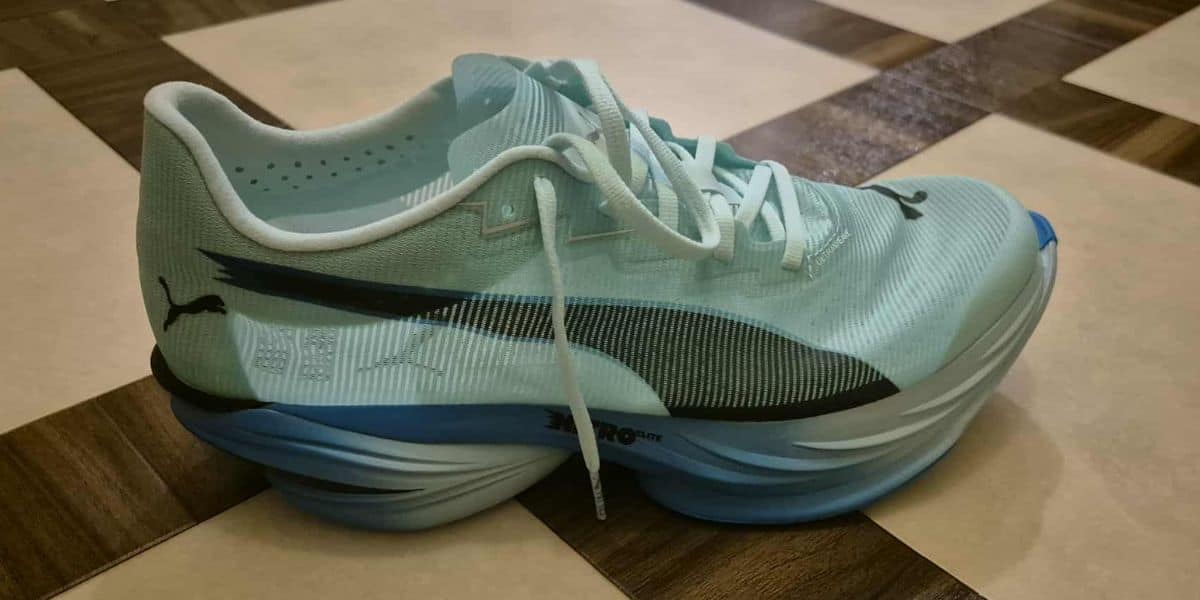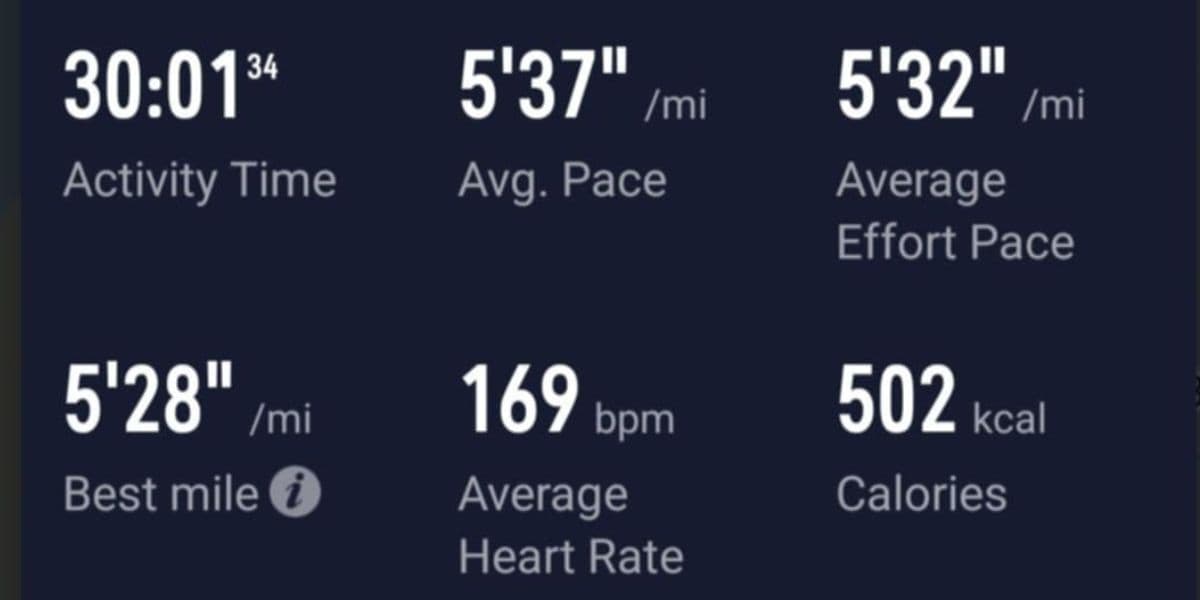After years of competitive running and now coaching athletes to personal bests, I've learned multiple tips and strategies to help you understand how to run faster and longer.
These methods helped me run a 31:13 10K, a 1:09 half-marathon, and a 15:09 5k.
Running may seem complex with all the technology and training theories available today, but at its core, it's about getting from point A to point B as efficiently as possible. The key is knowing which strategies give you the biggest return on your training investment.
1. Set SMART Performance Goals That Drive Progress
Goal setting is where every successful training journey begins, but most runners get this crucial first step wrong. Saying "I want to run faster" is too vague to create an actionable plan.
You need specific, measurable, achievable, relevant, and time-bound goals.
For example, if you're running a 25-minute 5K and want to break 20 minutes, that's a significant improvement requiring 6-12 months of dedicated training.
Setting a 4-week timeline sets you up for disappointment and potential injury.
Effective goals include running a sub-20-minute 5K within 12 weeks, completing your first half-marathon without walking in 16 weeks, or improving your 10K time by 2 minutes over 8 weeks.
It's important to be realistic when setting a time goal, which is where a coach can help.
For example, at the moment, my goal is to break 31 minutes in the 10k in 2 months' time. Currently, my best is 31.13, but I know that I need sufficient time to achieve that goal.
2. Invest in Carbon Fiber Technology for Real Performance Gains

The running shoe revolution isn't just marketing hype – carbon fiber plates and advanced foam compounds genuinely make runners faster.
Studies show modern super shoes can improve running economy by 2-4%, translating to measurable time improvements.
The technology combines carbon fiber plates that provide spring-like energy return with advanced foams offering superior energy return compared to traditional materials.
However, different shoes work better for different runners based on gait, foot strike, and target distances.
Use super shoes strategically for key workouts and races rather than all training.
This maximizes performance benefits while extending their lifespan and preventing over-dependence on the technology.
I have tested a range of carbon-plated shoes. Here is a list of some of my favourites.
My main current race-day shoe is the Puma Fast-R Nitro Elite 3.
3. Master Heart Rate Zone Training for Optimal Adaptation

Incorporating heart rate zones revolutionized my training and helped me break through several plateaus.
While age-predicted formulas (220 minus your age) provide a starting point, they can be off and are really just a guideline.
Consider getting a lactate threshold test or performing a field test for accuracy.
The key is patience and discipline.
My current setup is using the Coros Pace 2 along with the Coros heart rate strap. I have found the data to be very accurate.
Your easy days need to be truly easy, even if that means walking up hills initially to maintain your target zone. Your easy pace will gradually become faster as your aerobic system adapts.
4. Incorporate Strategic Strength Training

Research, such as a study published on the National Library of Medicine, shows that runners who include resistance training can improve running economy and may also help them stay injury-free.
Focus on functional movements that address common weakness areas.
Plyometric exercises like single-leg bounds, box jumps, and jump squats teach your muscles to produce force rapidly, translating directly to better efficiency and speed.
Do be careful adding in plyometrics, as they can put a lot of stress on the body. Start with very basic drills such as hopping and skipping.
I currently have a routine of Squats, Deadlifts, and 1-legged deadlifts, along with hip thrusts.
I personally find this works well for me.
I recommend 2-3 strength sessions per week. Keep sessions to 30-45 minutes.
5. Use GPS Technology for Precise Training Execution

Modern GPS watches have revolutionized training by allowing precise execution of complex workouts anywhere.
For interval training, you can run structured workouts on roads, trails, or treadmills while maintaining precise pace and recovery targets.
The key is consistency in pace and effort.
Your GPS provides real-time feedback that helps you avoid starting too fast or running too conservatively.
Don't become a slave to technology, though – learn to run by effort and use GPS data as confirmation. Particularly on my easy runs, I really like to just run to feel.
6. Develop Speed Through Strategic Fartlek Training
Fartlek training, Swedish for "speed play," bridges the gap between structured track intervals and unstructured running.
This method develops speed, mental toughness, and the ability to change pace mid-race.
A basic session might involve alternating between 1-minute hard efforts and 2-minute recovery jogs, repeated 6-8 times.
Or incorporate pyramid structures like 1-2-3-4-3-2-1 minute efforts with equal recovery periods.
Terrain-based fartlek using natural features like hills or landmarks as triggers develops race-specific skills like surging on hills or responding to competitors.
7. Perfect Your Threshold Training for Breakthrough Performances

Lactate threshold training is one of the most powerful tools for improving race performance.
Threshold pace is "comfortably hard" – challenging but sustainable. You could speak in short phrases but not hold a conversation.
Break threshold training into manageable segments with short recoveries.
A typical session I use is 5 x 6 minutes at threshold pace with 1-minute between efforts.
8. Periodize Your Training for Peak Performance
Periodization involves progressive cycling of training aspects during specific time periods.
Rather than training the same way year-round, periodization allows you to peak for important races with various stages of training.
A typical cycle includes: base building (4-6 weeks of higher volume, lower intensity), build phase (4-6 weeks introducing structured workouts), peak phase (2-3 weeks with decreased volume but maintained intensity), and taper phase for race preparation.
Understanding periodization prevents trying to be in peak shape year-round, which leads to burnout, injury, or staleness.
9. Master the Art of Tapering for Race Day Success
Tapering can make or break months of preparation.
The fundamental principle is reducing training volume while maintaining intensity.
Your body needs time to absorb training adaptations while clearing accumulated fatigue.
For 5K and 10K races, a 7-10 day taper is sufficient. Begin reducing volume by 25-30% while maintaining some race-pace work.
Half-marathon and marathon tapers require 2-3 weeks, gradually reducing volume while maintaining intensity throughout.
Resist the urge to squeeze in extra workouts during the taper. Fitness gained over months can't be lost in a week, but accumulated fatigue can prevent you from accessing that fitness on race day.
10. Fuel Your Performance with Strategic Nutrition

Proper fueling makes the difference between breakthrough performance and hitting the wall.
For runs lasting longer than 90 minutes, your body's glycogen stores become limited, making external fuel sources essential.
Energy gels have become the gold standard due to convenience and rapid absorption.
However, never try new products on race day – practice your fueling strategy extensively during training runs.
Time fuel intake strategically. Waiting until you feel low on energy means you're already behind, as it takes time for consumed carbohydrates to reach your muscles.
As I hope to race a marathon in the near future, I have started practising taking an energy gel on my long runs, and I am finding it helps with getting through the last few miles.
11. Optimize Running Form for Greater Efficiency

Efficient running form conserves energy and reduces injury risk.
Small improvements yield significant benefits over thousands of steps during longer races.
Most efficient runners maintain a cadence between 170 and 180 steps per minute.
Increasing cadence typically results in shorter, quicker steps that reduce overstriding.
Use a metronome app or GPS watch features to practice hitting target step rates.
The key is landing with your foot underneath your center of gravity rather than out in front.
Maintain a slight forward lean from your ankles and avoid hunching your shoulders.
12. Build Your Aerobic Base with Patient Progression
The aerobic base is the foundation for all other fitness, yet many runners rush through base building.
These adaptations take time, often 6-12 weeks of consistent training.
The 10% rule remains valuable – increase weekly mileage by no more than 10% each week.
Build long runs progressively, adding one mile every 2-3 weeks. Base building pace should feel comfortable and conversational.
13. Cross-Train Intelligently for Balanced Development

Cross-training provides aerobic benefits while reducing repetitive stress.
Swimming provides excellent cardiovascular training while being non-impact.
Cycling translates well to running because it uses similar muscle groups and movement patterns.
Cross-training shouldn't completely replace running except during injury recovery.
The principle of specificity means running fitness is best developed through running. Use cross-training to supplement your running while providing variety.
14. Build Community and Accountability for Long-Term Success
Training alone can work for some runners, but most benefit enormously from community support and accountability.
Running clubs provide structured group training that can elevate your performance beyond what's possible alone.
Training partners offer consistency and accountability that's hard to replicate alone.
Online communities make it possible to connect with runners worldwide.
Racing provides the ultimate community experience while offering objective feedback on fitness progress.
Key Principles for Sustainable Progress
Throughout all these strategies, several fundamental principles determine long-term success:
Consistency trumps intensity every time. The runner who trains moderately 300 days per year will outperform the runner who trains intensely 150 days per year.
Progressive overload must be gradual. Increase training stress through small, manageable progressions rather than dramatic jumps.
Recovery is when adaptation occurs. Prioritize sleep, nutrition, and easy training as much as hard workouts.
Individual response varies significantly. Pay attention to how your body responds and adjust based on your unique physiology.
The process is more important than any single outcome. Focus on executing your training plan consistently rather than obsessing over individual results.
Remember that becoming a faster, stronger runner is a journey measured in months and years, not days and weeks.
The most successful runners share one trait: they fall in love with the daily process of getting better.
